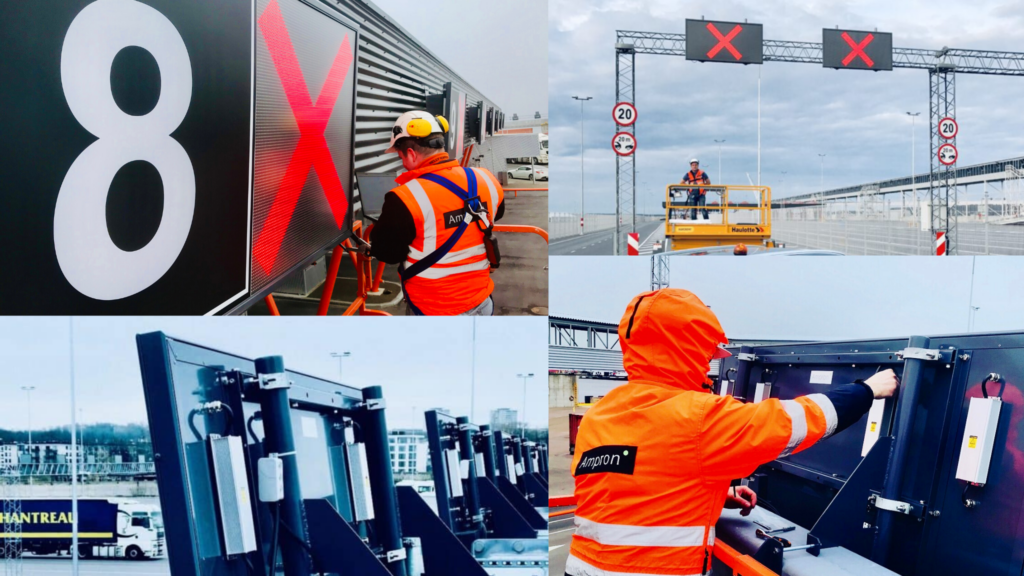Introduction
Access gate displays are an important aspect of modern facilities and buildings, as they provide a way for individuals to gain entry or access to a particular area. These displays can be used in a variety of settings, including residential buildings, commercial offices, and public facilities.
One of the main benefits of access barrier displays is that they improve security by allowing only authorized people access to a restricted area. This can be especially important in environments where confidential information or valuable assets are stored. Access portal screens can also help streamline the process of granting access to authorized individuals, increasing efficiency and convenience. As well as providing security and convenience, entrance gate displays can also be used to show important information or messages to people entering or leaving a facility. This may include information about emergency policies, procedures or protocols, as well as promotional or marketing messages.
Overall, display gateways are a valuable asset to modern facilities and buildings, helping to improve security, efficiency and communication.

What are access gate displays?
Entrance gate displays are electronic devices used to control and monitor access to a particular area or facility. They are usually used in conjunction with an access control system, which is a system that regulates the movement of people in and out of a restricted area.
Gate displays typically work using different technologies such as barcode scanners, RFID readers or biometric scanners. These technologies allow the access control system to verify the identity of individuals and grant or deny access based on predetermined rules or permissions.
In general, gate displays are an essential part of modern access control systems, helping to regulate and monitor access to facilities and buildings.
Benefits of access gate displays
There are several advantages to using access portal displays in modern facilities and buildings, including:
- Enhanced Security: Door screens allow only authorized individuals access to a restricted area, improving overall facility security. This can be especially important in environments where sensitive information or valuable assets are stored.
- Convenience: Access portal screens can streamline the process of granting access to authorized individuals, increasing efficiency and convenience. For example, individuals can use their badges or smartphones to gain access to a facility instead of having to remember a password or wait for a security guard to grant access.
- Customization: Access barrier panels can be customized to meet a facility’s specific needs. For example, they can be configured to grant access to specific areas or floors based on a person’s role or clearance level.
- Communication: Door displays can be used to display important information or messages to people as they enter or exit a facility. This may include information about emergency policies, procedures or protocols, as well as advertising or marketing messages.
Overall, portal displays offer a number of benefits that can improve the safety, efficiency and comfort of modern facilities and buildings.

Types of access gate displays
There are several types of access portal displays commonly used in modern facilities and buildings:
- Kiosk-Style Displays: Kiosk-style displays are typically located at the entrance to a facility and allow individuals to scan their ID or enter a code to enter. These screens can be stand-alone units or integrated into an access control system.
- Wall displays: Wall displays are usually located near the entrance to a facility and provide information or directions to people entering and exiting the facility. These screens can be used to display news, videos, or other types of content.
- Portable Screens: Portable screens are mobile devices that can be carried out and used by security personnel or other authorized persons to grant access to specific individuals or groups. These screens can be used to scan ID cards or other forms of identification, or to enter access codes or different types of credential information.
Overall, the type of display best suited for a particular installation or building depends on the specific needs and requirements of the installation. For example, in our product selection, there are a variety of models that can be found on our Product Page.

Applications for access gate displays
Entrance gate displays have a wide variety of uses and can be used in a variety of environments including:
- Residential Buildings: Display gateways can be used in residential buildings, such as apartment complexes or gated communities, to control access to common areas and provide information to residents.
- Commercial Offices: In commercial offices, entrance gate displays can be used to control access to specific areas or floors, as well as display important information or messages to employees.
- Public Facilities: Gate displays can be used in public facilities, such as museums, libraries or government buildings, to control access to restricted areas and to provide visitor information.
- Ports and airports: Display gateways can be used in ports and airports to control access to terminals and other restricted areas and to display important information or messages to passengers.
- Factories: Display gateways can be used in factories to control access to specific areas or floors, as well as display important information or messages to employees. Overall, entrance gate displays have a wide range of applications and can be used in a variety of environments to improve safety, efficiency and communication.

Case Studies
Here are some examples of how Access Gate Displays have been successfully implemented in different environments:
- Residential Buildings: In a residential building, gate displays were used to control access to common areas such as the pool and fitness centre. Residents could use their badges to access these areas, improving security and convenience.
- Trade Office: In a trade office, access gate indicators were used to control access to specific floors and areas within the building. Employees could use their badges to gain access to their respective floors, streamlining the process of entering and exiting the building.
- Public Facility: In a public facility, such as a museum, gate displays were used to control access to restricted areas and to show important information to visitors. Visitors could scan their tickets at the gate display to enter the museum, and the display also provided information on exhibit locations, opening hours, and other important details.
- Port: In a port, access door screens were used to control access to terminal buildings and other restricted areas. Employees and contractors could use their badges to access these areas, improving security and efficiency.
Overall, access displays have been successfully implemented in a variety of settings to improve security, convenience, and communication. For more examples of our customer’s stories, you may check them out in our Customer Stories section.

Conclusion
In conclusion, entrance gate displays are an important tool for modern facilities and buildings, helping to improve safety, efficiency and communication. These displays can be used in a variety of environments, including residential buildings, commercial offices, and public facilities, and come in a variety of forms, including kiosk-style displays, wall-mounted displays, and portable displays.
Benefits of using access gate displays include increased security by allowing only authorized individuals to enter a restricted area, increased efficiency and convenience through streamlined access control processes, and the ability to display important information or messages to individuals while entering or leaving a facility.
If you’re considering implementing display gateways in your facility, it’s important to carefully evaluate your specific needs and choose a solution that fits your facility and your requirements. This way, you can improve the safety, efficiency and convenience of your facility and provide a better experience for your employees, residents or visitors.
As working closely with our customers, we have lengthy experience in various solutions. If you have a project at hand and would need an expert opinion, you are more than welcome to contact us and have a talk with our experts.







